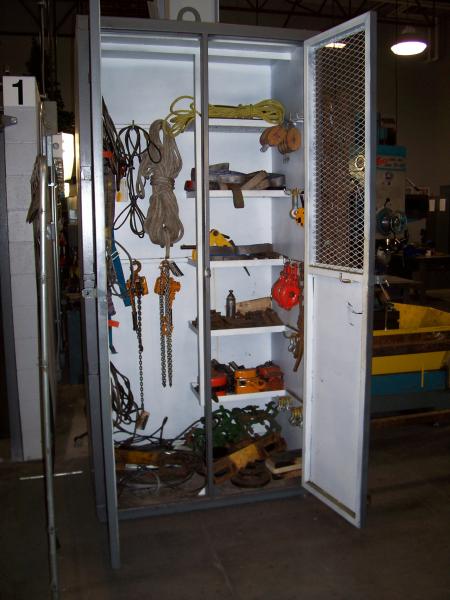
Rigging is a special interest area of mine - which is why I use this subject to show why training in some of the basics of the "adjunct" skills a welder uses is so important.
There is a "rigging equipment locker" with wire-rope slings, ropes, come-alongs, block-and-tackle, strops, beam-clamps, D-shackles, jacks, chain-blocks and others.

This jib crane is in the yard.
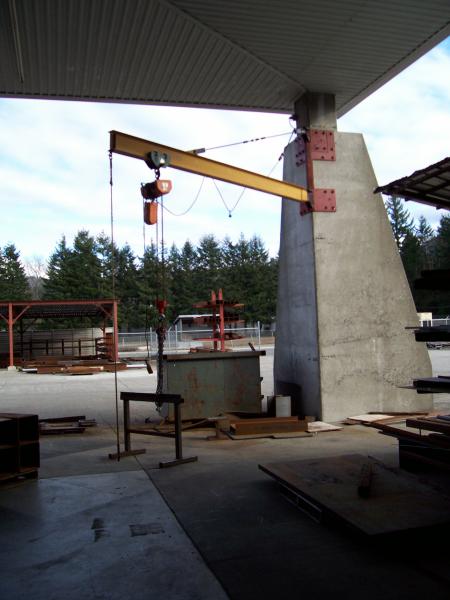
It has some utility to the welding department staff for handling loads. It is however mainly provided as a teaching tool, so students can get experience of moving and controlling loads far heavier than could be moved by manual lifting. In other words, "you cannot cheat the learning objective" - this is about working in the real domain of mechanical lifting devices.
Here is a pair of tubular components with flanges which present at a 45degree angle of slope.
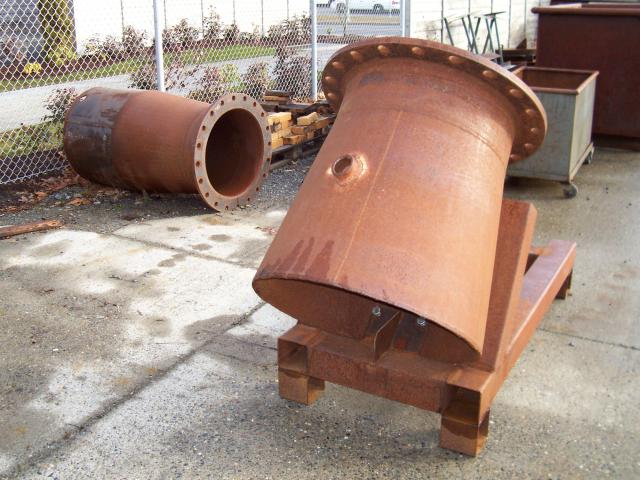
As a learning exercise, the students assemble it by matching up the flanges and bolting up the flange joint. The tubular pieces are each far too heavy to lift manually, so the students must use lifting equipment, particularly chain-blocks, with accurate positioning of components. The exercise gives students some experience of the realities of erecting equipment on site.
This "site box" serves as the equipment locker for the rigging equipment used to teach the rigging skills of the welder training course at this college.
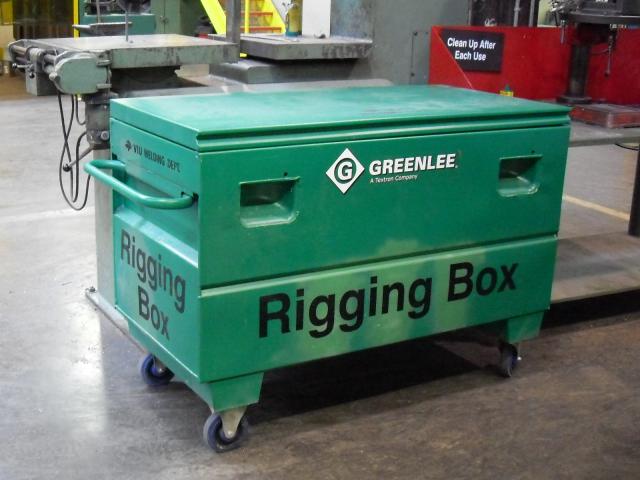
Here is what is inside the rigging equipment "goodies chest".
There are the usuals there - chain-blocks, come-alongs, strops of fabric and wire-rope, crane-hooks, ratchet straps, bridle-sets (pair of chains with hooks off one hoop), shackles, plate-lifters
No photo taken - the diagram shows this simple triangulated bracket from which a chain-block can be suspended.
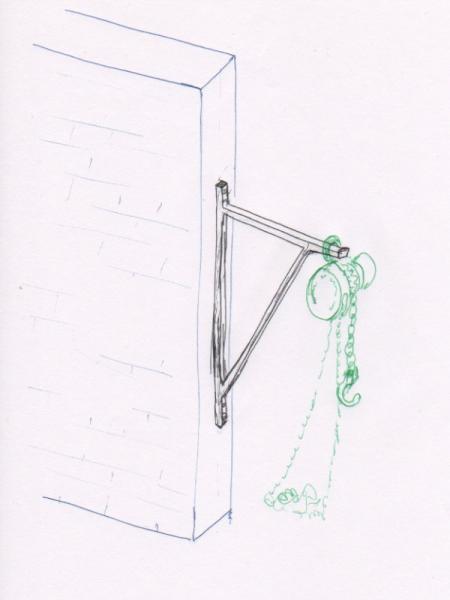
This enables the students to experience using a chain-block (the most frequently used mechanical lifting device for maintenance and small-scale steel-erection tasks) and the way loads are attached to the hanging hook of the chain-block - direct hooking opportunities and using various strops and chains.
So this apparently simple provision meets a lot of needs.
To comply with the syllabus, Camosun College is getting some rigging equipment - such as fits in a locker. Historically, Camosun College, training shipyard welders, hasn't seen a need to teach rigging. The exception compared to the other colleges visited.
The point is to show how crucial the "adjunct skills" are to the day-to-day work of a "welder".
The section taps into a very personal view of what developing a skill has done for me and my career path. I believe this: if you do not get taught the basics of a skill you do not get entrained in that skill's use and will not develop it, whereas someone taught the basics will get included in the use of that skill and will develop it until they become an accomplished practitioner themselves.
I present two example where I have used the skills of rigging to do day-to-day work in steel construction.
I could equally extensively treat fabrication skills and reading blueprint skills regarding the same point - which is unnecessary as the overall point is already made.
With only your toolbox and what you have in it, these steels need to be pulled sufficiently into line that you can insert a podger (N.Am - "spud wrench") through the bolt holes to finish off the aligning.
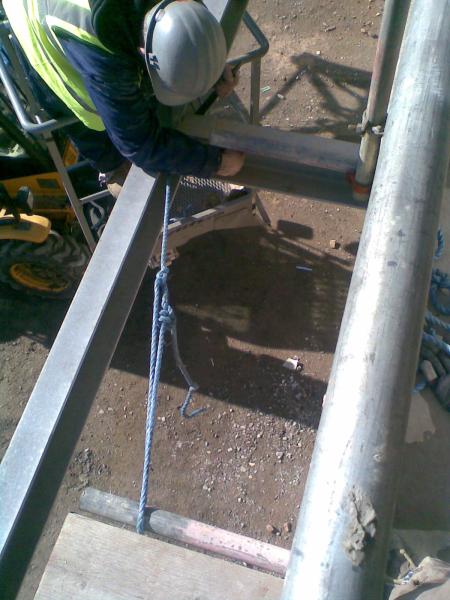
However, in cases like this the friction of the rope as it is drawn passing through the rope loops defeats a lot of the 3-to-1 mechanical advantage a wagoner's hitch could deliver. Apropos of this (previously mentioned):
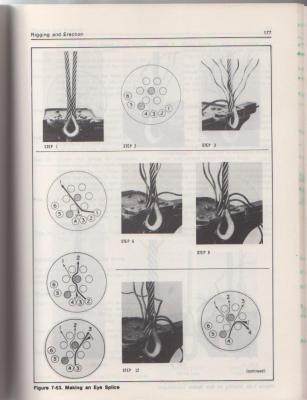
Inserting "thimbles" into a modified Wagoner's Hitch occurred to me as a solution to lower friction and obtain close to the 3-to-1 M.A. offered by having 3 parts of the system.
Here is my "Tofino modification of a Wagoner's Hitch".
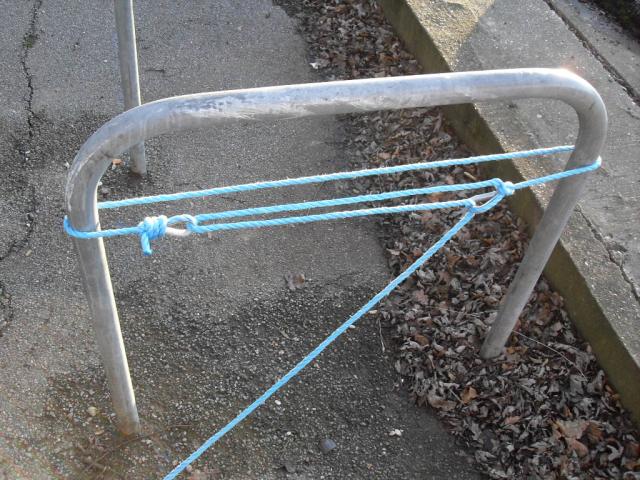
The sliding friction of the rope in the thimbles is indeed very low. The Hitch tensions up so much under a person's pulling strength that the back strand of the modified Hitch plucks like a guitar string.
[return: BC influence -> eyesplice]
These steel stairway/landing units needed additional restraint to prevent forward (and backward) movement. The delivery was a three day non-stop shuttle from workshop to site by two trucks, to fit-out a 10-storey cast concrete stairwell shell in one continuous crane-slot. This photo shows the initial solution.
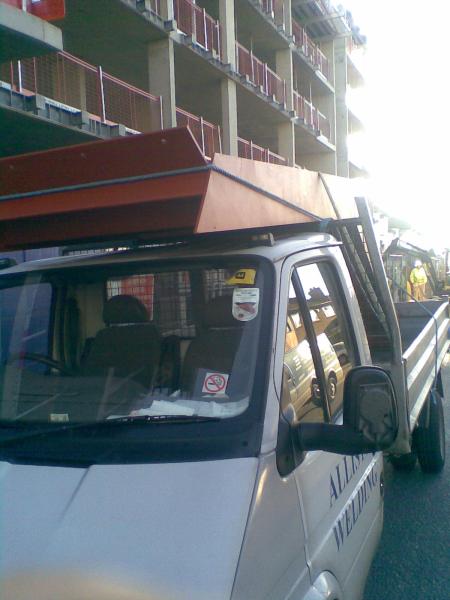
The illustration shows subsequent and final specification for fastening the load.
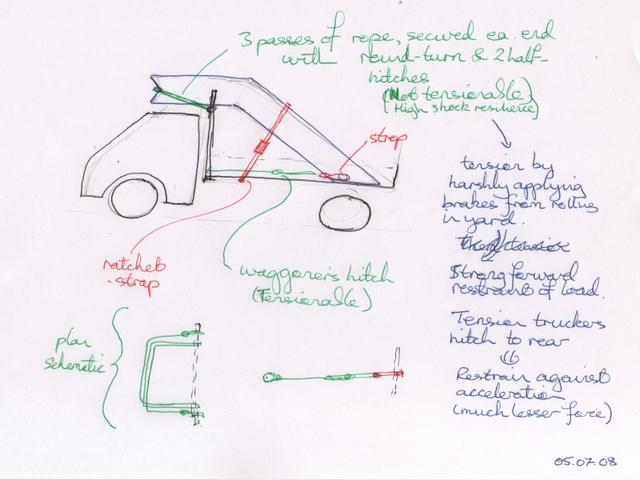
The forward restraint of the stair assembly is most crucial - the brakes of the truck can cause about 1G of deceleration force; also for the worse case of a collision in congested London traffic. So the solution uses three loops of a rope around the front of the stairway/landing unit, using its re-entrant angle feature for location. The ends of the rope are secured around the bolster with a "round-turn and two half-hitches". However the intermediate wraps at the bolster are only a half turn so the rope tension can redistribute by slippage. As explained, this knot is untensionable and is brought into tension by jabbing the brakes at the yard, sliding the load against the ropes. The rearward restrain only needs to hold against the very limited acceleration provided by the motor moving this heavy load. The rear wagoner's hitch, tensioned after sliding the load up against the front loops, holds the stairway thus. The ratchet strap, rated to 5Tonnes tensile force, was also tensioned up at this point. Forcefully "slaloming" the truck side-to-side with this load on a stretch of private road leaving the yard showed no concerns for proceeding onto the public highway.
Next - new topic - relationship of officialdom to the BC welding course.